Nick Richwagen
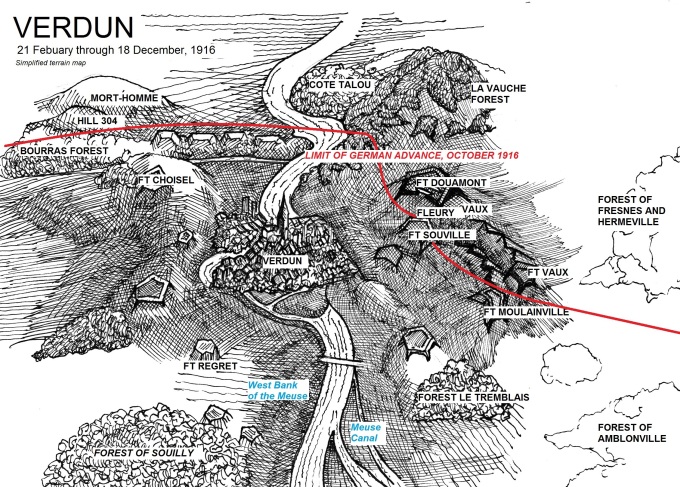
Project Description
This is an ongoing project to complement my reading of John Keegan’s The First World War (2000), as well as Michael Howard’s The First World War: A Very Short Introduction (2003). I have also made use of other literature and resources throughout the project (see Useful Resources below).
Every year 1914-1918 has a paragraph summary detailing the events of each month. This article is for the first half of the conflict, 1914-1916. Each year of the war also has a table, divided into sections for the Western Front, the Eastern Front, the Southern Front/Balkan Campaign and the multiple Turkish Fronts fought against the Ottoman Empire.
Particular attention is spent on the largest battles of the war: Verdun and the Somme (1916), and Passchendaele (1917). The first two of these will be covered here.
1914: The War Begins
The Great War began in July 1914, after decades of military buildup and tension between the great powers of Europe. Conflict was set off by the assassination of Archduke Franz Ferdinand, heir to the throne of Austria-Hungary and nephew of the Austrian Emperor Franz Joseph. In retaliation, Austria-Hungary declared war on Serbia on July 28th. The next day, Austrian forces began shelling Belgrade, the Serbian capital. Alliances between the great powers and the invasion of Belgium brought Germany and Austria-Hungary into conflict with Russia, France, and the United Kingdom by early August.
August
At the start of August, Germany invaded Belgium in order to maneuver around the strong French positions along the Franco-German border. This began the Battle of the Frontiers. Stiff Belgian resistance prevented German forces from invading past the border until late August. Belgian fortresses, most importantly Liege and Namur, held the Germans back until the last fort surrendered on the 17th. French attempts to invade German Lorraine in mid-August ended in utter disaster. Pushing into France, the Germans were able to overwhelm seven French armies as well as the British Expeditionary Force (BEF).
Combat in 1914 often featured field armies maneuvering in open spaces to gain advantage. By the end of the year, this would no longer be a feature of the war on the Western Front.
Also in August, the Austro-Hungarians invaded Serbia. At the Battle of Cer, Serbian forces defeated the far-larger Austrian army. As a result, Austria was forced to commit many more reserves to Serbia than Conrad von Hötzendorf, the overall Austrian commander, had anticipated.
In the east, Russian forces invaded German Prussia. Changes in leadership in the east saw Erich Ludendorff and Paul von Hindenburg take command over German forces. Their leadership saw the annihilation of the Russian Second Army at the Battle of Tannenberg by August 30th. In the subsequent First Battle of the Masurian Lakes, Russian forces were expelled from German territory.
Russian forces fared far better at the Battles of Galicia (Lemberg), where they caused 300,000 Austro-Hungarian casualties and took over 100,000 prisoners by September 11th. Many remaining Austrian forces were then bottled-up at the fortress city of Przemyśl at the foothills of the Carpathian mountains. Attempts to relieve this fortress from Russian siege would see almost a million deaths in the Austrian army before Spring.
September
The start of September saw French forces and the BEF in full retreat towards Paris as the Germans pushed onward. British success at Mons had done little to stop the ongoing German offensive. As the German armies reached the outskirts of Paris, the German 1st and 2nd Armies became detached. French Commander-in Chief Joseph Joffre noticed this gap and allied forces were able to drive a wedge between German forces. This Miracle of the Marne saw the allies pushing German forces back along the Aisne river. Mid-September saw the creation of the trenches that would define combat at the western front for years to come.
October-December
Both sides attempted to outflank enemy trench-works in the Race to the Sea, which culminated in the First Battle of Ypres in late October through November. This battle saw the end of the old British professional army, most of whose soldiers had become casualties since the start of the war. Huge numbers of German casualties occurred in inexperienced reserve units brought up to the front.
The Ottoman Empire entered the war in late October by shelling Russian Odessa. In November, Russian troops crossed over the Caucasus Mountains into Ottoman territory during the Bergmann Offensive, opening up the Caucasus Front against the Turks. Although the Turks had initial success, they were forced to retreat after the terrible Battle of Sarikamish, suffering the terrible effects of mountain winter.
Serbia again triumphed over Austria in the Battle of Kolubara, ending in December. However, casualties were massive on both sides and the Serbs were running low on munitions and manpower.
Table of Events- 1914
| 1914 | Western Front | Eastern Front | Balkans Campaign/ Turkish Fronts |
| June | 28: Assassination of Archduke Franz Ferdinand | ||
| July | July Crisis | 7/25: Serbia mobilizes
7/28: Austria declares war 7/29: Austria shells Belgrade |
|
August
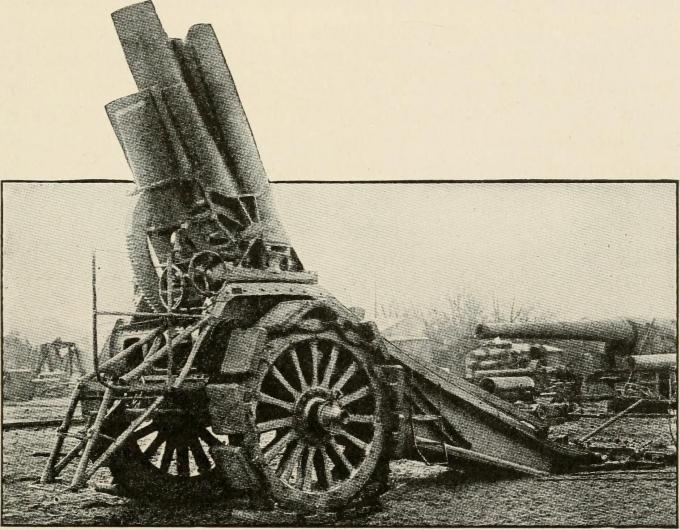
|
8/1: Germany mobilizes, declares war on Russia.
8/3: Germany and France declare war on each other 8/3: Invasion of Belgium 8/4: The United Kingdom declares war on Germany 8/7: The British Expeditionary Force (BEF) arrives in France 8/14-24: Battle of the Frontiers 8/17: Liege fortification cleared 8/21: Charleroi 8/23: Mons 8/24: The Great Retreat begins 8/30: Kluck stops German drive to Paris |
8/15: Russia invades Prussia
8/23-9/11: Battles of Galicia 8/27-30: Battle of Tannenberg
|
8/1: Germany and the Ottoman Empire sign a secret alliance treaty
8/6: Austria-Hungary declares war on Russia 8/12: Austrian invasion of Serbia (starts Balkan Campaign, B.C.) 8/15: Battle of Cer (B.C.) |
| September
|
9/4: Joffre halts retreat of French forces
9/5-12: Battle of the Marne 9/14: Falkenhayn new German Chief of Staff 9/15- Push to the Aisne and the creation of trenches |
9/7-9/14: First Battle of the Masurian Lakes
9/11: Battle of Galicia ends 9/16: Siege of Przemyśl Begins |
9/6-10/4: Battle of Drina |
| October | 10/10: Siege of Antwerp ends
10/19-11/22: First Battle Ypres |
Vistula River/Lodz Stalemate | 10/4: End of Battle of Drina
10/29: Turkey shells Odessa, sparking war with Russia |
| November | 11/11: Kindermord at Ypres
11/22: End of Ypres |
11/2: The Russian Bergmann Offensive starts the Caucasus Campaign (C.C.)
Fao Landing/Battle of Basra starts the Mesopotamian Campaign (M.C.) 11/16-12/16: Battle of Kolubara (B.C.) |
|
| December | Christmas Truce | 12/7: Niš Declaration
12/16: End Battle of Kolubara 12/5-1/18: Battle of Ardahan (C.C.) 12/22-1/17: Battle of Sarikamish. Enver Pasha assumes direct control over the 3rd Army. |
1915: Stalemate
The year 1915 would see unsuccessful Allied offensives in the West, the failed Gallipoli campaign in Asia minor, and the eastward movement of the Central Powers into Russian Poland. The entry of Bulgaria at the end of the year on the side of the Central Powers would lead to the collapse of Serbian resistance and the occupation of the entire country.
January-March
German air raids on Britain’s east coast caused widespread panic, though civilian casualties were few. British morale was boosted by the naval victory at Dogger Bank. Ottoman forces failed in a raid against the Suez Canal, having been spotted by British airplanes during their long trek across the Sinai Peninsula.
In February, Russian forces suffered another crushing defeat at the Second Battle of the Masurian Lakes, part of a German winter offensive. Again, Russians were consoled with victory against the Austro-Hungarians: the Fotress of Przemysl fell in late March. The Austrian attempts to relieve the fortress, combined with their disastrous Serbian campaign, pushed their forces to the brink of collapse. The Austro-Hungarian Empire would no longer be able to mount an offensive independent of German help for the remainder of the war.
Germany declared all of the waters around Great Britain a war zone in February, as a response to the British blockage of German shipping in the North Sea. German submarine warfare would become the hallmark of German naval operations, while most British surface ships were bottled up by the Royal Navy in the German Bight.
British ships shelled the Dardanelles in February, expecting a quick capitulation of the Ottoman Empire. The Turks successfully used mines and artillery to destroy the attacking ships and force a British retreat.
The Battle of Neueve Chapelle was the first deliberate British offensive; British and Indian troops successfully penetrated German lines but were unable to capitalize on their success because of poor communication. German counterattacks resulted in large losses. It was the first of several allied offensives on the Western Front in 1915.
April
In the Second Battle of Ypres, German forces used gas for the first time as a weapon of war. The Germans were unable to capitalize on the mass panic this caused, as both sides quickly developed gas countermeasures.
In the secret Treaty of London, the Allies promised Italian diplomats territorial gains from the Austro-Hungarian Empire if they joined the Allied cause.
The Gallipoli Campaign began in April with landings of British and ANZAC forces at Cape Hellas and ANZAC Cove. The campaign was seen as a way to relieve the stalemate on the Western Front by opening up a new offensive against the Central Powers. British forces faced an uphill struggle against Turkish forces on the rocky cliffs of western Anatolia.
May
Germans captured a French document, detailing the concept of defense-in-depth. The document suggested that trench combat was best suited to having a thinly manned front line, scattered strong points and reserves protected in bunkers. The Germans adopted this concept thoroughly, and were generally to have better prepared trenches than the Allies for the duration of the war.
Russia suffered another major setback during the Gorlice–Tarnów Offensive, starting in May 1915. The combined forces of Germany and Austria-Hungary causes the total retreat of the Russian line by June. German forces were bolstered by reinforcements taken from the Western Front, where their troops had taken defensive positions.
The Sinking of the Lusitania by a German submarine provoked outrage from the United States. Although the ship was likely carrying British munitions, 1,200 civilian passengers were killed, including 128 American citizens. This action was critical in turning international opinion against Germany.
Italy entered the war on May 23rd, as Luigi Cadorna, Chief of Staff of the Italian Army, prepared for offensive battles against Austria. Though Austria-Hungary had proven extremely weak in her combat against Russia, her entrenched positions in the Alps would prove extraordinarily advantageous against the Italians.
The inconclusive Second Battle of Artois was the second allied offensive of 1915; the goal was to capture Vimy Ridge, a high-point under German control. The Allies advanced a few thousand yards at the cost of over 130,000 casualties. German casualties were substantial as well: 70,000.
June
As part of the successful Gorlice–Tarnów Offensive, Austrian forces recaptured Przemyśl on June 3rd. For the Russians, holding Poland looked increasingly untenable.
The First Battle of the Isonzo River was an Italian offensive against Austro-Hungarian forces in the Alps. The high ground was held in a defensive position by the Austrians, who controlled the Karst Plateau. The Italians believed it would be easier to attack here than other even more geographically unfavorable positions in the higher Alps. The First Battle ended in defeat for the Italians, who suffered 15,000 casualties to the Austrian 10,000. The Italians would continue to fight offensive Battles of the Isonzo until September 1917, each of which would end in failure and cost many tens of thousands of lives.
July
The Russian Army began its Great Retreat Eastwards in July, as it was desperately short in supplies after the summer offensive of the Central Powers. Russian Poland jutted out as a huge salient and could no longer be defended. Many Russian soldiers lacked even rifles. Although the retreat was conduced in good order, it caused problems for Russian morale. The Russians devastated Polish territory as they moved eastwards, and German and Jewish minorities in Russian lands were attacked and expelled.
August
Warsaw was taken by the German 12th Army on August 5th. The Czar took personal control of Russian forces this month, replacing the Grand Duke Nicholas. This would soon damage his legitimacy in the eyes of the Russian people, as he would personally be associated with every military failure.
August saw the last Allied offenses at Gallipoli. The Battle of Sari Bair involved an offensive from Anzac Cove and a new landing five miles north at Sulva Bay. At the end of the month, Allied forces made two assaults at Hill 60. Both Sari Bair and Hill 60 ended in British defeat.
September
On the Western Front, the Allies launched an Autumn Offensive; the British attacked at Loos and a French-British force at Champagne simultaneously on September 25th. These two battles were the third allied offensive of 1915 on the Western Front. Despite extensive preparations beforehand that made use of aerial photography, combined with extensive artillery bombardment, both battles ended in Allied defeat. Loos saw the first British gas attack, which went poorly- wind blew the gas backwards on advanced Allied troops.
The Russians ended their Great Retreat, forming a new defensive line from Riga on the Baltic Sea to the Pripyat Marshes.
October
On October 3rd, Allied forces landed in Salonika, Greece, in order aid Serbia to the North. However, political paralysis in Greece prevented movement of the Allied relief force.
At the start of October, the Serbian people were in dire straits. Bulgaria had been mobilizing its forces against Serbia since September, after secret negotiations with Germany. Bulgarians were motivated to retake land lost to Serbia after the Second Balkan War of 1913. On October 4th, Bulgaria declared war, invading Serbia on October 14th. Serbia was defeated by the Bulgarians at the Battle of Morava and Ovche Pole. By then, Serbia had already been invaded by the German 11th and Austrian 3rd Armies, who marched into Belgrade on the 9th. The desperate Serbian army moved south towards Kosovo to regroup.
The Third and Fourth Battles of the Isonzo were fought this month, causing a combined 120,000 Italian casualties to the Austrian 70,000.
November
The Serbs made a last stand at the Battle of Kosovo, but were unable to meet up with the Allies to the south and were defeated by the Bulgarians. The survivors of the Serbian army began a long retreat to Albania as their nation was overrun.
In Mesopotamia, near the ancient Parthian capital of Ctesiphon, British forces were forced to retreat after two days of fighting with Ottoman forces. The British withdrew to the town of Kut on the Tigris in order to regroup their forces.
December
Ottoman forces arrived and began the Siege of Kut on December 7th; the siege would continue for five more months as Charles Townshend British and Indian forces desperately held on.
The Gallipoli campaign was brought to a close, as Allied forces were brilliantly evacuated beginning on the 18th of December. Over 250,000 casualties had been sustained, mostly by the forces of the British Empire. The Turks had suffered a similar number yet remained victorious.
On December 10th, Sir John French was replaced as the commander of the BEF by Sir Douglas Haig due to British failure at Loos. The year of disastrous Allied offensives ended.
Table of Events- 1915
| 1915 | Western Front | Eastern Front | Southern Front/ Balkan Campaign | Turkish Fronts |
| January | 1/19-1/20: German zeppelins attack British cities, causing widespread terror
1/24: Battle of Dogger Bank in the North Sea |
1/26-2/4: Raid on the Suez Canal (Sinai and Palestine Campaign, S.P.C.) | ||
| February | 2/7: Winter Battle of the Masurian lakes | 2/19: Shelling of the Dardanelles | ||
| March | 3/10-13: Neuve Chapelle | 3/22: Fortress of Przemyśl falls | ||
| April | 4/1: French airplane first to shoot down another airplane
4/22-4/25: Second Battle Ypres
|
4/26: Treaty of London with Italy | 4/24: Deportation of Armenian intellectuals starts the Armenian Genocide
4/25: Landings at Cape Helles, ANZAC Cove start the Gallipoli Campaign, which continues until January 1916. 4/28: First Battle of Krithia |
|
| May | Germans review “defense-in-depth” from French document
5/7: Sinking of the Lusitania 5/9: Second Battle of Artois |
5/2: Start of Gorlice–Tarnów Offensive (May-June)
Russia expelled from Poland |
5/23: Italy enters the war | |
| June | 6/3: Austrians recapture Przemyśl | 6/23: First Battle of the Isonzo River begins (Battles of the Isonzo continue until 1917) | ||
| July | Beginning of the Fokker Scourge; German aircraft dominate the skies | Great Retreat of the Russian Army begins as central powers continue push eastwards | 7/7: End of the First Battle of the Isonzo | |
| August | 8/19: Sinking of SS Arabic; Germany ends all attacks on passenger ships | 8/5: German troops take Warsaw from Russia
Czar takes personal command |
8/6-8/21: Battle of Sari Bair (August Offensive), the last major British advance of the Gallipoli campaign, which ends in failure.
8/21-8/29: Battle of Hill 60, the last offensive action of Gallipoli taken by the allies |
|
| September | Beginning of Great Autumn Offensive
9/25-10/13: Battle of Loos 9/25-11/6: Battle of Champagne |
Great Retreat of the Russian Army ends | ||
| October | 10/3: Salonika landing of British troops to aid Serbia
10/4: Bulgaria joins the Central Powers 10/9: Belgrade falls |
|||
| November | 11/15: Inter Allied Conference at Chantilly; plans laid for 1916 offensives | Joint Austrian-Bulgarian offensive causes Serbia to be completely overrun. | 11/25: Battle of Ctesiphon (M.C.) | |
| December | 12/10: Haig replaces John French as commander of the BEF | 12/7: Siege of Kut begins, continues until April 1916 (M.C.)
Evacuation of Allied Forces ends the Gallipoli campaign |
1916: Year of the Great Battles
Two of the largest and bloodiest battles in human history were fought in 1916. Verdun began with a German offensive against French forces in February. The battle soon consumed lives and resources on an unfathomable scale, and was the longest battle fought in the Great War, lasting over 9 months. In July, the British launched a major offensive at the Somme in order relieve their French allies; the 1 July assault led by the 4th Army caused 20,000 British deaths on a single day. Verdun and the Somme would both rage until the end of the year. The Russian Empire saw its greatest success in June’s Brusilov Offensive, which led to the collapse of the Austrian army on the Eastern Front. In August the Romanian Kingdom entered the war on the Allied side.
January
The tiny Kingdom of Montenegro was now subjected to an Austro-Hungarian invasion. The well-entrenched Montenegrin forces were able to repel multiple Austrian attacks over two days at the Battle of Mojkovac, buying time for the Serbian army to continue its retreat into Albania. The Austrians continued to capture Montenegrin territory; the capital Cetinje was lost on the 11th. Montenegro was overrun by the end of the month.
Russians began the Erzurum Offensive in the Caucasus Campaign, following up on their victories from late 1914. Russian forces took the stronghold city, opening up the way for the invasion of Asia-minor.
Great Britain, long reluctant to introduce conscription, passed the Military Service Act at the end of January.
February
February at Verdun- The German Offensive
It is difficult for Britons to realise what Verdun means to France. The world can show no battlefield to correspond to it. On those heights Gaul and Teuton had, from the blizzards of February to the snows of the following December, been fighting out a racial feud which had existed for thousands of years. The concentrated fury of ages raged and tore, shattered and killed for ten months in one intensive struggle which has no parallel in the history of human savagery.
– David Lloyd George
The Battle of Verdun was envisioned by German Chief of Staff Falkenhayn as a way to “bleed France white.” If German forces were able to gain territory on the Meuse heights surrounding the French fortress-town of Verdun, Falkenhayn believed that France would be obligated to attack German positions to regain crucial territory. As it was clear that the defensive stance was much the stronger in this war, repeated French attacks would only cause her enormous losses. It was believed by the German Command that 5 French soldiers could be killed for every 2 Germans lost.

Because the Germans dominated the skies and relied on telephone communications, they were able to prepare for a massive offensive in the Verdun region without any notice from French forces. 1,200 pieces of artillery were brought up using the excellent local network of German railways, as well as 5 corps of troops used to reinforce the German 5th Army. A vast network of rear trenches, shelters, and artillery repair shops were created; all were built completely in secret.
On the morning of February 21st, Germans began an artillery bombardment that was followed at 4 pm by a massive German infantry assault. Use of German elite storm-troopers and flamethrowers caused panic in the surviving French defenders who occupied the outer defensive trenches of Verdun. The heroic Émile Driant delayed the German advance for two days with the two battalions of French light infantry he commanded. In the end, he was killed and his position was overrun.
The city of Verdun was massively fortified, and surrounded by a ring of 18 forts. Most important of these was Fort Douaumont, originally believed to be the strongest fortified position on earth. At 1,300 ft it was the highest position in a 20 mile radius. However, on February 25th she was occupied only by 58 French territorials instead of the 500 soldiers required. That afternoon, the fort surrendered without a shot fired to the 24th Brandenburger Regiment of the German Army. The first week of the battle saw the Germans advance 6 miles. French counterattacks on the 26th, directed now by General Philippe Pétain, were unsuccessful.
By February 27th, however, the rapid German advance ground to a halt. A rise in temperature quickly turned the soil into muck, making it impossible for German artillery to move forward and cover advancing troops. Additionally, the French had drawn up reinforcements as they quickly realized the significance of the German offensive.
March
March at Verdun Verdun- The Battle for the West Bank (March-May)
By the beginning of March, Verdun was at a stalemate. Because the German advance had slowed, the right flank of the German 5th Army was exposed to French artillery from across the river Meuse. French enfilade artillery fire caused tens of thousands of casualties among the exposed German soldiers.
In order to relieve their exposed flank, the Germans planned another offensive, this time to capture the west (left) bank of the Meuse and take the high ground at Mort-Homme, which sheltered French artillery batteries. Starting on March 6th, Seven German divisions crossed the Meuse and assaulted Mort-Homme in columns of 500 men, taking huge losses.
While these assaults proceeded, on March 8th the German 5th Reserve and 3rd Army Corps began attacks on Fort Vaux, the strongest French position on the east (right) bank.
On March 14th, the Germans on the left bank shifted focus to the intermediary Hill 304, hoping for greater offensive success. German attacks were frequently met with French counterattacks. At the end of March, the Germans had suffered 82,000 casualties to the French 88,000. The strong German defensive position proposed by Falkenhayn had never materialized, as German casualties mounted during the furious assaults on the French-controlled high ground left of the Meuse.
April
April at Verdun
On April 9th, at Verdun the Germans launched a simultaneous offensive against Mort-Homme and Hill 304. This was the bloodiest part of the struggle for the left bank of the Meuse, but the Germans were again unsuccessful. German forces on Mort-Homme had been exposed to fire from Hill 304 and the French artillery. The Germans planned for a new offensive directed squarely at Hill 304. 500 heavy guns were brought up by the Germans in preparation.
May
May at Verdun
Because Pétain incessantly demanded his superior, Joffre, for more troops and resources, he was replaced by General Robert Nivelle on May 1st.
On May 3rd the Germans began their massive artillery attack on Hill 304. The bombardment lasted for almost two days and killed 10,000 French troops defending the hill, who were unable to be relieved. The Germans assaulted the Hill the evening of the second day, and after 3 more days of close-quarters combat Hill 304 was taken by the Germans. The path lay clear to Mort-Homme, which fell to German forces by the end of the month (May 29th). Now exposed, the French artillery was forced to retreat. The Germans had achieved their objectives on the west bank of the Meuse, but at an unimaginable cost.
June
June at Verdun- The Battle for Fort Vaux
German attacks on Fort Vaux had begun back in March, but success could only be achieved after capturing Mort-Homme. Now the focus of German efforts returned to the right bank. By June 2nd, the Germans had Fort Vaux completely surrounded, and for the five days they battled the French defenders in furious combat, both above and below ground.
Fort Vaux was commanded by Major Sylvain Raynal, who was handicapped from two wounds suffered earlier in the war. He led a stout defense by the fort’s 600 soldiers. The French at Vaux were isolated and unable to be relieved, and suffered terribly under constant artillery bombardment. Fighting off flamethrower attacks and dying of thirst, the French defenders were forced to surrender on June 7th. As a prisoner, Major Raynal was taken personally to meet Crown Prince Wilhelm, the commander of the German 5th Army.
By the end of June, more than 200,000 men had been lost at Verdun by both France and Germany.
Verdun- The Last German Offensive (June 23rd – September)
On June 23rd, the Germans launched a new offensive, hoping to seize Fort Souville and the village of Fleury. Three army corps attacked, stalling at Souville but successfully taking Fleury and Thiamont. French troops, panicked from gas shells, fled into the town of Verdun; their line had almost broken. By the evening, however, the situation had stabilized through French leadership. The Germans failed to take Souville and did not penetrate the French line. Brutal fighting continued around Fleury.
July
July at the Somme- The First Phase (July-August)
The Somme marked the end of an age of vital optimism in British life that has never been recovered
– John Keegan
The Battle of the Somme was the product of the Chantilly Conference of late 1915. It was the original intention of Allies in 1916 to launch coordinated offensives on both the Western Front and in the east. The latter offensive would come to be the Brusilov Offensive that began in June. In the west, however, the battle of Verdun altered the Allied plans. Now that France was already involved in a behemoth struggle entirely her own, it would be the British who would be the main participant in the western offensive for 1916.
As the French situation at Verdun was increasingly desperate, Joffre was adamant that the timetable for the offensive be moved up to July, instead of August as originally planned. The British agreed to this but with frustration- most of the British divisions for the battle consisted of poorly trained recruits from Kitchener’s New Army. Many of these soldiers, who served with hometown friends and co-workers in Pals Battalions, had insufficient training for the new offensive.
The location for the battle was chosen to be in the Somme department, as it was the place where the French and British armies met. Sir Douglas Haig, the British commander, would have preferred Flanders, but French army participation in the upcoming battle was still to be considerable. Starting on June 24th, a massive artillery bombardment began along the 20-mile Somme front. Over a thousand field guns combined with 400 heavy guns to shell the entire front at a depth of 4,500 yards. Although the guns would fire over a million shells, the bombardment failed in its intended purpose- the destruction of German defensive positions, particularly machine gun nests, and to cut barbed wire in front of the trenches. Most of the German soldiers of von Below’s 2nd Army would survive the week long allied bombardment and emerge unscathed to defend their positions.
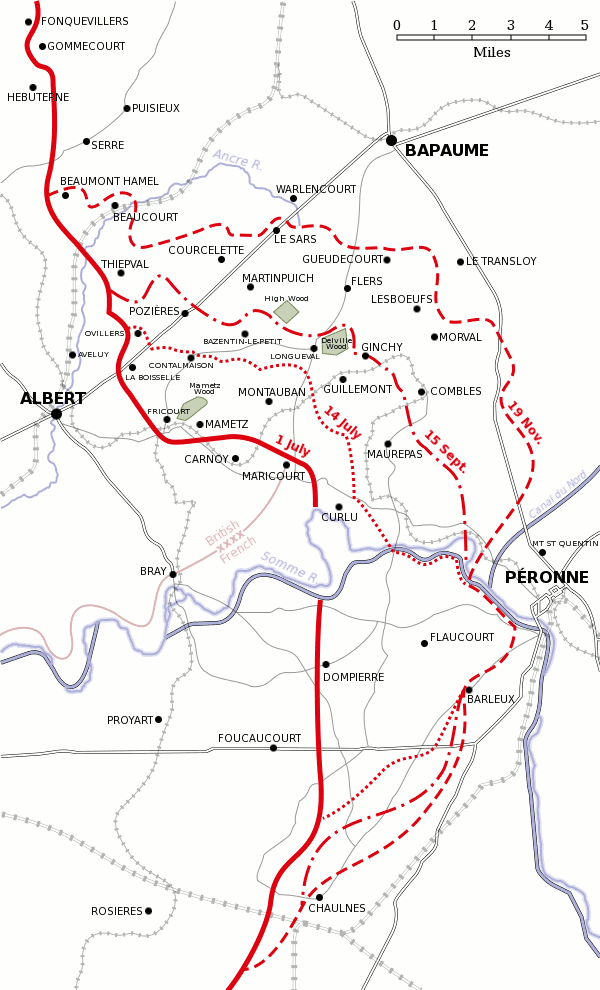
The first day on the Somme was July 1st. Three Allied armies- the British 3rd, 4th, and French 6th- sent 120,000 soldiers over the top towards the German trenches. The defending German troops emerged in numbers far greater than predicted, and were able to pour devastating machine gun and rifle fire onto the advancing allied troops. However, the Germans had not expected the Allied offensive to extend so far south and so were unprepared along those parts of the front. South of the Albert-Bapaume road (a feature which roughly bisected the Somme front), the veteran French 6th Army and the troops of the British XIII and XV Corps met with success and captured their objectives. In this part of the battlefield, the Germans were in retreat.
North of the road, however, British troops were repulsed in a spectacular disaster. On that day, almost 60,000 British troops became casualties; 20,000 were killed. It remains, to this day, the worst day in the history of the United Kingdom. The First Day dominates the cultural memory of the Somme Battle, but it paved the way for further Allied success.
On the 14th of July, there would be another major offensive. The remainder of the First Phase of the Somme (July-August) would be characterized by further, smaller offensives with a high cumulative cost. Most of these smaller first-phase offenses were conducted over very narrow fronts, conducted in sequence, allowing for German forces to concentrate and overwhelm each attack individually. Little was coordinated across the front by Haig or the 4th Army commander, Sir Henry Rawlinson.
Ongoing actions by individual units continued for days after 1 July, in preparation for the offensive planned on July 14th. Many of these actions met with success. Three key positions were captured by the British between 2 July and the next big offensive in order to avoid enfilading fire- Contalmaison (2-10 July), Mametz Wood (7-12 July) and Trones Wood (8-14th). The three British divisions attacking in these engagements suffered terribly.
British divisions were replenished by July 4th in preparation for further attacks, and La Boiselle along the Road fell that day.
The Battle of Bazentin Ridge on July 14th was the second major offensive of the Somme. Haig insisted that the attacks would capitalize on the areas of Allied success on the first day, namely those areas south of Albert-Bapaume Road. Rawlinson insisted on a mass night attack, which was an unconventional tactic for a large offensive. Another large artillery barrage started on July 11th. This barrage continued right up until the assault began at 3:25 am 14 July, successfully keeping most German troops from manning their machine gun defenses. Already, the lessons of 1 July were making their impact on British artillery leadership.
The four British divisions successfully captured the fortified areas of Bazentin-le-Petit and Bazentin-le-Grand and adjacent woods, as well as Longueval. However, the British cavalry (including the 2nd Indian Squadron) brought up to attack the High Woods beyond the captured positions were massacred by German machine guns, despite achieving limited success. Further infantry assaults on the High Woods failed, but the 14th July attack was an overall victory. The Battle of Bazentin ridge demonstrated that the British army could successfully adopt new tactics, though offensives continued to come at a high cost- the British suffered 9,000 casualties.
July at Verdun
Now having to deal with the twin threats of the Battle of the Somme and the Russian Brusilov Offensive, in July the Germans had to scale back their operations at Verdun. Falkenhayn ceased the relentless flow of artillery shells to the battlefield, and no more reinforcements could be provided. On July 11th, the Germans broke through the French defense and finally seized Fleury. With the absence of reserve units, however, the Germans were unable to follow up on their success. It would be the last German offensive at Verdun.
August
August at Verdun
By August, it was clear to German leadership that Verdun had become a bloody stalemate, and that Falkenhayn’s battle had bled not only France white but Germany as well. Opposed by both Hindenburg and German Chancellor Bethmann-Hollweg, Falkenhayn was replaced on August 29th by Hindenburg as Chief of the German General Staff. In agreement with Crown Prince Wilhelm, Hindenburg resolved to extricate German troops from Verdun as soon as possible.
The last German offensive at Verdun began on August 1st as an attempt to smooth out the German front-line between the position of Fleury and Thiamont. After a month of inconclusive fighting, Hindenburg ended all Verdun offensives on September 3rd.
September
October
October at Verdun- The French Offensive (La Revanche) (October-December)
As the Germans continued to draw resources away from Verdun, French command was more committed than ever to total victory. Beginning on October 21st, French artillery barraged German forces over a 7 km front. Now the French had access to 400 mm howitzers, (like the Germans had at Liege) which were brought against German-held Douaumont. After shells penetrated to the lowest levels of the fortress, the Germans began evacuating. French artillery continued to provide a creeping barrage for French forces, which successfully pushed back the German line.
On October 24th, covered by the creeping barrage and heavy mist, the Colonial Infantry Regiment of Morocco swept in and recaptured Douaumont. Celebration broke out in the French army at this important milestone; German morale continued to crumble. French artillery then turned their attention to Fort Vaux, and on October 25th, French troops began assaulting the fortress.
November
November at Verdun
Having suffered over 1,000 casualties in attack, the French took Fort Vaux on November 2nd. It had already been abandoned by the Germans. By November 5th, the French had taken almost the entire battlefield; all of Verdun fell silent until December.
December
December at Verdun- the Final Month
On the 11th of December, French guns opened fire. Two days later, the French started a creeping barrage and and began a ferocious assault. After suffering more enormous losses, the French broke through German lines, taking over 10,000 prisoners. By December 19th, Hindenburg realized that the battle of Verdun was lost. All German forces retreated back to the positions held before the February German offensive.
The greatest battle ever fought by the French nation had ended in victory, but the tragic character of that victory is impossible to comprehend. Although there is much dispute over the exact numbers, Michael Howard writes that both the French and Germans had suffered around 500,000 casualties at Verdun (1 million total). Of those, roughly 400,000 were killed.
Table of Events- 1916
| 1916 | Western Front | Eastern Front | Southern Front/ Balkan Campaign | Turkish Fronts |
| January | 1/27: Military Service Act introduces conscription in the UK | 1/6-1/7: Battle of Mojkovac
1/5-1/17: Invasion of Montenegro |
1/10-2/16: Erzurum Offensive (C.C.) | |
| February | 2/21: The Battle of Verdun begins | |||
| March | 3/9: Germany declares war on Portugal | 3/18-3/30: Lake Naroch Offensive by Russian Army | 3/9-3/15: Fifth Battle of the Isonzo | |
| April | 4/24: Easter Rising in Dublin | 4/29: Siege of Kut ends in defeat for the British
Trebizond lost to Russia |
||
| May | 5/31: Battle of Jutland | 5/15-6/10: The Battle of Asiago | 5/9: Sykes-Picot Agreement secretly signed | |
| June | 6/5: Sinking of the HMS Hampshire and death of Lord Kitchener | 6/4: The Brusilov Offensive begins | 6/5: Start of the Arab Revolt against Ottoman Rule
6/10: Battle of Mecca |
|
| July | 7/1: The Battle of the Somme begins | |||
| August | 8/29: Falkenhayn replaced by Hindenburg and Ludendorff | 8/18: Romania enters the war on the side of the Allies
8/27: Romania invades Austria-Hungary |
8/3-8/5: Battle of Romani, the last attack on the Suez Canal (S.P.C.)
8/9: Battle of Bir el Abd (S.P.C.) |
|
| September |
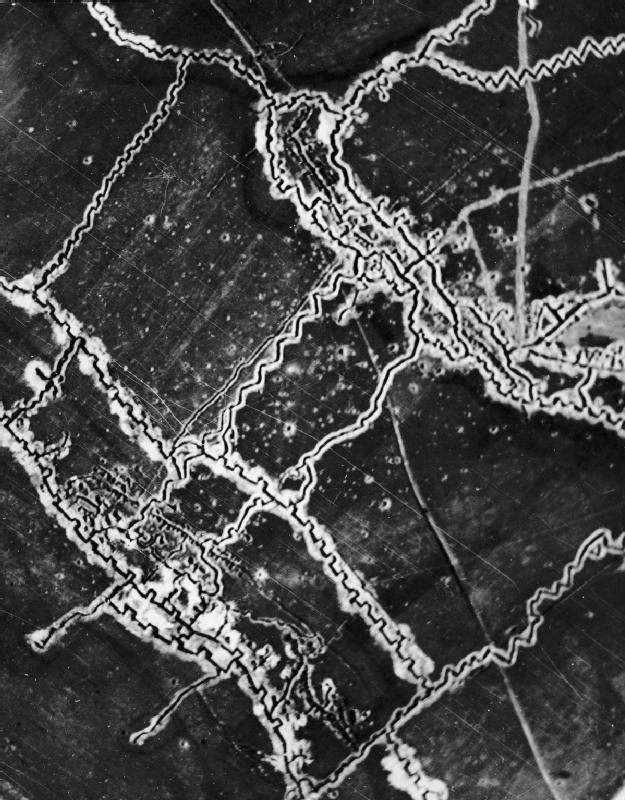 9/15: Battle of Flers (part of the Somme); first use of the tank in warfare |
9/20: The Brusilov Offensive ends | 9/27: Monastir Offensive
Germany reinforces Austria-Hungary on the Southern Front, introducing infiltration tactics. |
|
| October | ||||
| November | 11/18: The Battles at Verdun and the Somme end, with over 700,000 and 1 million total casualties respectively | 11/21: Death of Franz-Joseph | German troops cross the Carpathians | |
| December | 12/5: David Lloyd-George becomes British PM
12/13: General Joffre replaced by Nivelle in France |
12/13: White Friday
Romania is invaded by Bulgaria, the Ottomans, Austro-Hungary and Germany. Bulgaria nears Bucharest. |
12/23: Battle of Magdhaba (S.P.C.) |
Prewar Populations of the Combatant Nations
| Nation | 1914 Population | 2016 population |
| Russian Empire | 160-180 million (source) | Russian Federation (143 million), Poland (40 million), Baltic states (8 million) + others (…) |
| United States | 100 million (source) | 320 million |
| German Empire | 68 million + 15 million in colonies (source) | 80 million (Federal Republic of Germany) |
| Austria-Hungary | 50 million | Austria (9 million), Hungary (9.8 million) + others (…) |
| Japan | 54 million | 127 million |
| United Kingdom | 40 million + 390 million in colonies | 60 million |
| France | 40 million + 50 million in colonies | 66 million |
| Ottoman Empire | 20 million (source) | 75 million (Turkish Republic)+ others (…) |
| Italy | 35 million | 50 million |
| Romania | 8 million | 20 million |
| Portugal | 6 million | 10.5 million |
| Greece | 5 million (source) | 11 million |
| Serbia | 5 million | 7.2 million |
| Bulgaria | 4 million | 7.3 million |
| Montenegro | 500,000 | 620,000 |
| Allied total | November 1918: ~ 460 million (without colonies)
August 1914: ~270 million |
|
| Central Powers total | ~ 140 million | |
| World total | 1.5 billion | 7 billion |
Useful Resources
I have made use of the following resources for this project:
- John Keegan, The First World War (2000)
- Michael Howard, The First World War: A Very Short Introduction (2003)
- Ian Westwell, World War I Day by Day (1999)
- Epic History TV: World War One Series (YouTube)
- The Great War (YouTube Channel)
- On Verdun:
- firstworldwar.com, edited by Michael Duffey, The Battle of Verdun
- De Eerste Wereldoorlog, author Menno Wielinga, The Battle of Verdun
- On the Somme:
- William Philpott, Bloody Victory: The Sacrifice on the Somme (2009)
- Peter Liddle, The 1916 Battle of the Somme (1992)
- Thomas Scotland and Steven Heys, Understanding the Somme 1916 (2014)
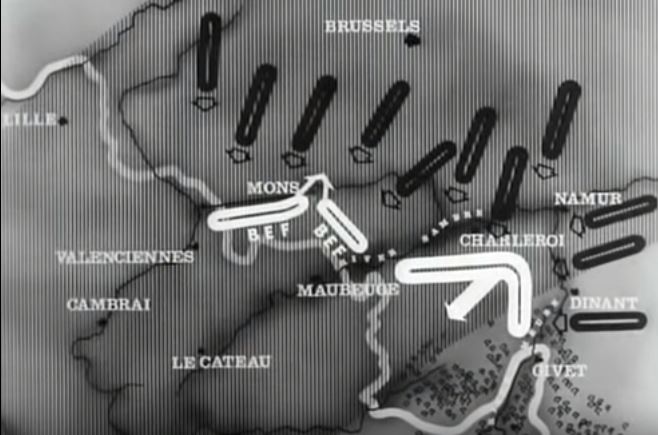
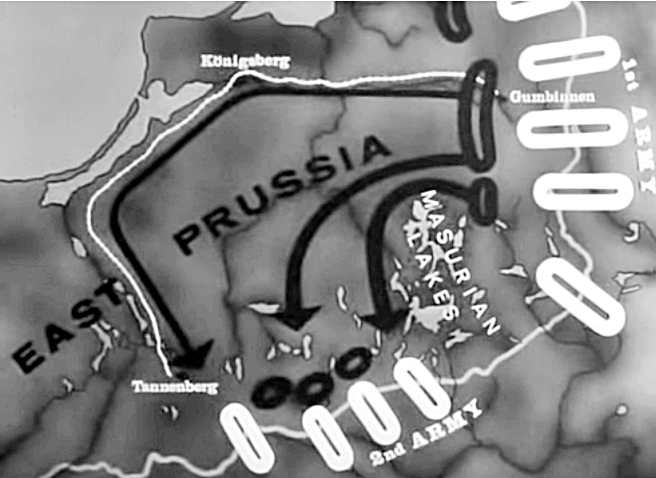
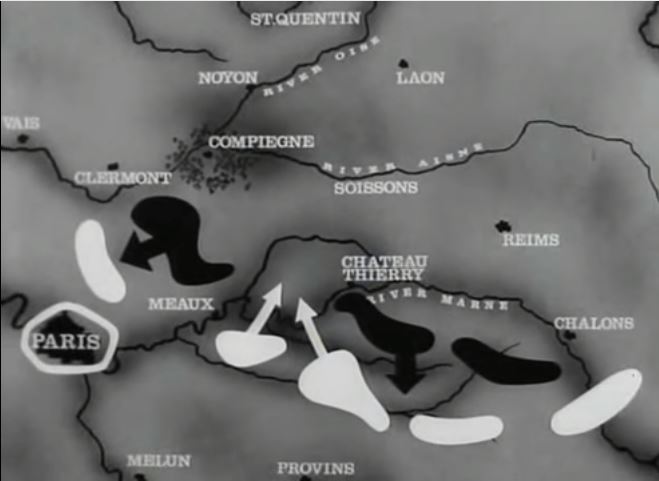
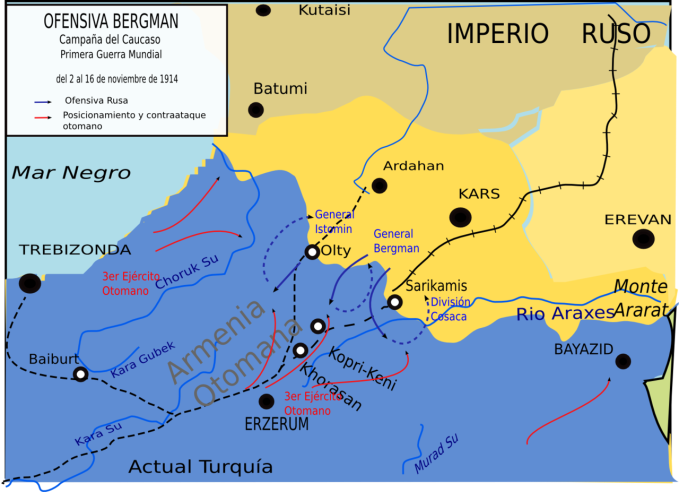
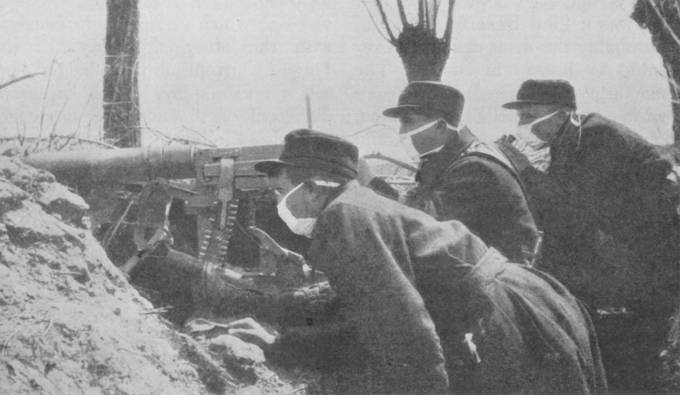
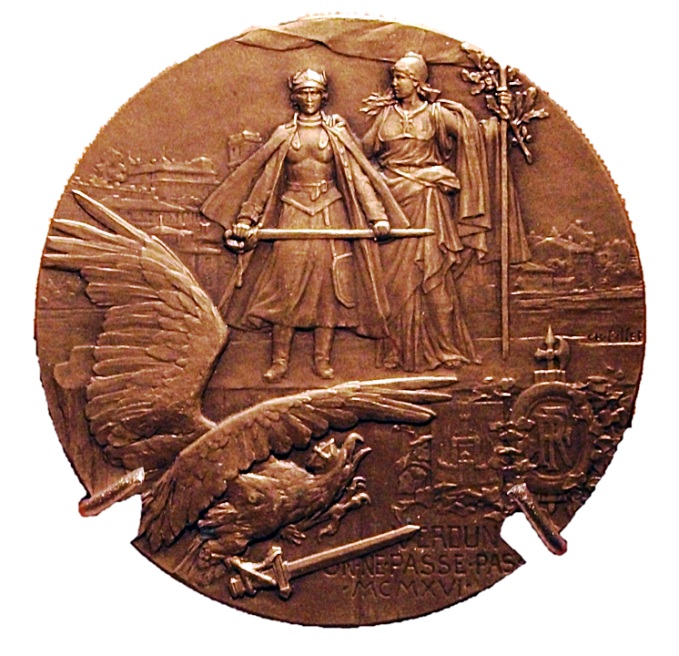
One thought on “A Concise Summary of World War I: The First Two Years (1914-1916)”